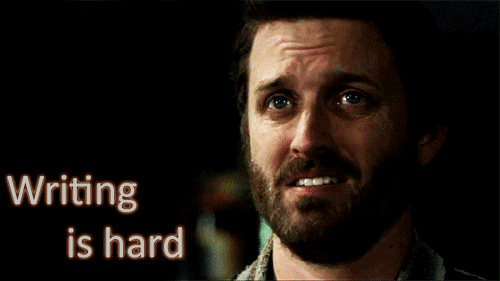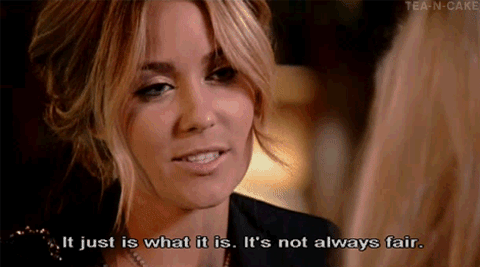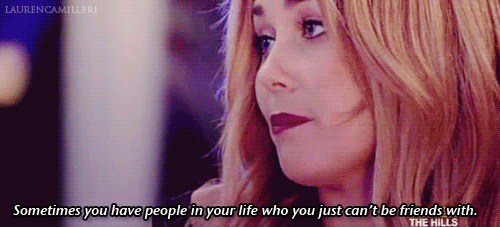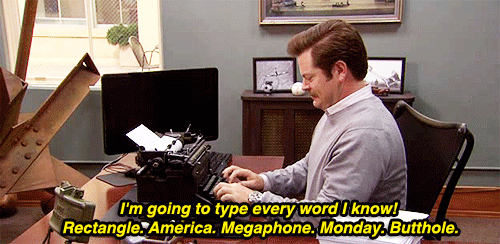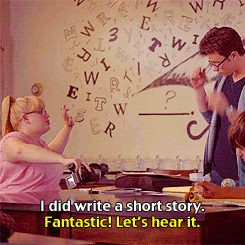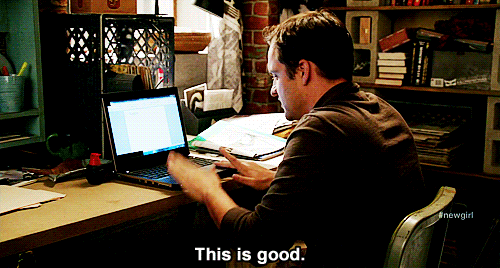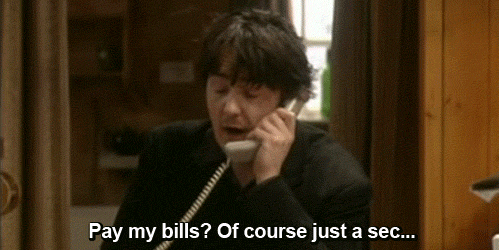Matador Network's Blog, page 2301
March 13, 2014
17 of the best Airbnbs in Berlin [pics]
THE AWESOME AND REVOLUTIONARY WEBSITE Airbnb allows pretty much anyone with a web connection to rent out their home to visiting tourists, and it manages to do it more or less without the creep factor (unlike, say, a rental notice on Craigslist). I personally prefer Airbnb because it offers a homey feel when you’re traveling, which is usually much needed after spending day after day in stale and homogenous hotel rooms or hostel dormitories.
When I’m looking through the site, I usually can’t afford to stay at the nicer spots, but it’s a fun exercise in wishful thinking — especially when some people are willing to rent out their private islands. Here are some of the best ones I’ve found in Berlin — some in the “yeah, I could maybe swing that” category, and others in the “not in a million years” category. 

1
Penthouse in Prenzlauerberg
I’ve never even been in a penthouse, let alone one that’s made of sunshine. This one sits in the city center, with views of Alexanderplatz, and it has an absolutely gorgeous rooftop garden. It’s the type of apartment that a down-on-his-luck writer has in virtually every sitcom and movie, but in real life, is usually reserved for rather successful businessmen. We writers just ain’t that lucky, so we have to live out our fantasies through our stories.

2

3
Intermission

6 baller crash pads in Berlin [pics]

What it takes to rent an apartment in Berlin
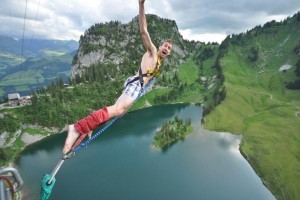
27 of the world’s burliest bungee jumps [PICs]

4
Dream Home in Kreuzberg
Occasionally you read the name that an owner has given their place and you think, “Okay, that’s a little bit much.” Dream Home is an exception. I mean, Jesus. It’s also in Kreuzberg, it has a view of the canal right across the street, and it has an awesome no-rail stairway that’s existence in America would be completely impossible thanks to litigation culture. It also has a balcony, it’s not too expensive, it has a canoe available, and, oh hey, kids stay free. It legitimately annoys me that some people have their shit enough together to own a home like this.

5

6

7
Loft in Kreuzberg
I’m resigned by now to the fact that I’m probably never going to live la vie boheme. Berlin has been establishing itself lately as one of the main cultural centers of Europe, however, and much of this centers around the artsy neighborhood of Kreuzberg. So any of the places available in Kreuzberg are basically going to be top on my list, because I not only want to live la vie boheme, but I want to be the first to live it with money. This loft was one of my favorites: overlooking a garden with absolutely crazy amounts of space that I was not aware was possible in major cities anymore.

8

9
Intermission

15 super unique libraries around the world [PICs]

82 iconic world landmarks to visit before you die [PICs]

40 of the most creative custom bikes on the road [pics]

10
Salon in Mitte
Some of the spots you find on Airbnb are less places to crash for the night, and more places to hold an event. I’ve never wanted to become a vulture capitalist, but this room might make me switch careers from impoverished travel writer to robber baron. It looks like it’s made entirely of mahogany and burnt leather, and I bet it smells like pipe smoke. It reminds me of the line from New Girl: “When I put my hands on this desk, I feel sexually proficient for the first time in my life.”

11

12

13
“BlissRoom” in Prenzlauerberg
Any place called “BlissRoom” can’t be that bad. I took a single look at this and thought, “This has to be owned by a yoga instructor.” Turns out, no, it’s owned by a Healing Practitioner and Massage Therapist, but it underscores my point: People working in the relaxing arts are the best decorators. Also in Prenzlauerberg, which is right by the city center, this one (unlike many on this list) is actually pretty cheap, and is totally a place I could end up crashing. So this is in the realm of potential wish-fulfillment.

14

15
Intermission

25 animals way weirder than anything you’ve seen in science fiction [pics]

75 places so colorful it’s hard to believe they’re real [pics]

15 of the most haunted places in the world [pics]

16
Pension Berlin in Kreuzberg
We’re going with one that has less of a “sunshine and daydreams” decorating vibe to it for this one. For this one, we’ve got artists. In their reception area, they’ve got ever-changing “exhibitions” – which is what I’m going to start calling my fridge magnets – and they’ve got their own private cinema downstairs. Yes please. On top of all that, the home’s electricity is entirely green. So it’s got that going for it, which is nice.
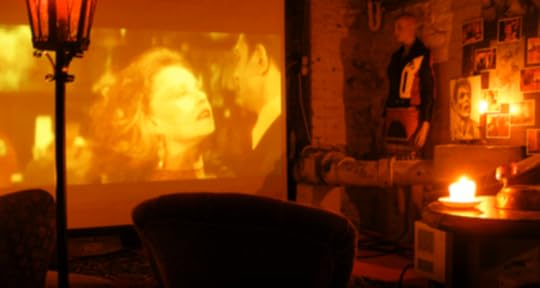
17

18

19
Apartment in Mitte
I really don’t know what it is about this one that I love – maybe it’s the mini-pillows shaped like Mac OS icons, maybe it’s that the bulletin board in the kitchen has a drinking game on it, or maybe it’s because its decorating style seems to switch between “trendy” and “I’m on a boat,” but this is absolutely where I’m gonna try and crash the next time I’m in Berlin.

20

21

22
Flat in Kreuzberg
I did not think I’d be including a place based solely off of their kitchen table, but this is a gigantic slab of concrete that has the stove built into it, and can seat ten people. I want to sit around that table over an elaborate meal with all of my friends before going out. The rest of the place looks cool as well, but it’s on the list for the awesome kitchen table.

23

24

25
Castle Kreuzberg
You remember that time you said, “Hey, I hope I never sleep on a hammock in a goddamn castle?” Yeah, me neither. This one’s back up in the “pricey” range at $637 a night, but seriously guys: There’s a hammock, and it’s in a castle. It also has a private park.

26

27

28
“Undiscovered Art” in Prenzlauer Berg
I’m a sucker for closed-in porches on cobblestone streets in trendy parts of Berlin. This is right across from the “Kulturbrauerei,” or “Culture Brewery,” which has a bunch of theaters and clubs. And I’d like to point out that for whatever reason, German architects seem to have figured out how to make literally any room in any building absolutely flooded with light. Get back on your game, America, I’m tired of living in the dark.

29

30

31
Nomads Apartment in Mitte
Like the castle, this is a pricey one, but it features a punching bag. Right in the middle of everything. That should be a feature in literally every living room in every household. It would solve so many problems. That said, it’s in the city center, it has an absolutely gorgeous view from the balcony, and it has pictures featuring swear words over the beds. I’ll take it.

32

33

34
Garden Penthouse in Wilmersdorf
This is a longer-term stay: The minimum is 15 nights, which, trust me, once you see the price tag, will be plenty of time. It’s two floors though, and the top floor has a wrap-around balcony with views of south Berlin. The security deposit alone is significantly more than the entire budget of my upcoming visit to Europe, but hey, if my being poor means someone else is rich enough to crash at this place that is literally more expensive in a month than my apartment is for two years, then I’ll take it.

35

36

37
6 Room Apartment by Brandenburg Gate
While the price tag initially looks a little steep on this one ($849 a night), it actually houses 16 people and is right near Brandenburg Gate, the Reichstag, and Alexanderplatz. So it’s incredibly affordable (if you’ve got a big enough crew rolling with you), and it’s a pretty nice place that appears to have used literally all of the white marble in Germany.

38

39

40
Luxury Penthouse in Mitte
Yet another awesome penthouse with a communal building rooftop, and its very own blue bar. This is the most affordable penthouse we’ve listed so far, at only $396 a night for up to 6 people.

41

42

43
House in Tempelhof
This house gets on the list for a single reason: It includes a sauna. It does not appear that anyone has stayed here yet (and it might have something to do with the fact that under “bed type” instead of saying “Twin” or “Queen,” it just says, “Real”), but honestly, my dream day of travel involves walking around the city all day, returning home, sitting in the sauna, and then hydrating and going out for the night. So I’ll sleep on a “Real” bed if it means I get to do that.

44

45

46
Modern Apartment in Kreuzberg
My first thought when I looked at this one was, “Oh god, I want that bookshelf.” A lot of messing around on Airbnb is basically just looking at bookcase porn. But this place looks incredible, and it’s one of those rare places that has nothing but glowing reviews.

47

48

49
Luxury Apartment at Potsdamer Platz
This place is actually in the Sony Center in the heart of Berlin, and the views are absolutely incredible. It’s super trendy and has a kitchen that’s got more chrome than pretty much any non-restaurant kitchen I’ve ever seen, and it’s actually reasonably affordable if you bring enough people with you.

50

51
The post 17 of the best Airbnbs in Berlin [pics] appeared first on Matador Network.
March 12, 2014
5 things I learned as a ghostwriter

Photo: Nana B Agyei
WHEN YOU’RE TRYING TO BE a writer for hire, you agree to writing pretty much anything people will hire you to write. Sometimes that means agreeing to write for a celebrity dentist/beautician when you’re a disgusting bearded guy with no healthcare. Sometimes that means convincing Nobel laureates to attend a global forum on a topic you got a 1 on for your high school AP exam.
My point is, if you’re not an expert in something, you learn how to sound like one if you want to get paid, and by proxy you figure out how to sound like the people who actually are the experts. And through it all, you learn some valuable things about people, as I have.
Not all gay men say “fabulous.”
In my few years of ghostwriting, I’ve publicly pretended to be multiple relatively high-profile gay men who, if you have cable, literally might be on your television right now. As I wrote for these men, throwing myself into their voices without ever actually watching their design shows, my instincts screamed the word “fabulous” basically every time I needed a positive adjective.
Then I remembered that I should probably do some research about the people I was imitating, and read their blogs and social media feeds (which in all probability were at least partially ghostwritten by another dude just like me) to find not one use of the token-gay-friend-in-a-’90s-sitcom go-to word. Lesson being: People are complex, no matter how much you may find yourself trying to simplify them into something replicatable, something thinly defined.
Interior designers don’t drop Star Wars refs.
I’ve had a startling amount of highly successful designers as clients, which is not an ideal market for a guy whose idea of feng shui is hanging a dartboard over a 5 x 5 sheet of plywood next to his desk. After the initial surge of anger at finding that people pay other people they don’t know more money than I will make in the next 20 years to decide what color their couch should be, I realized that writing for a woman like this would require me to change my creative mindset completely.
I know, this sounds obvious, but one of the biggest issues I’ve seen for ghostwriters is the tendency to allow things to slip from their own realm of experience into the words of a surrogate author who doesn’t share those experiences. If you’re representing a national brand for someone whose market and image are highly refined, middle-aged, and almost definitely not into any of the things you are, you have to control your impulse to say things you would say. No matter how perfect you think that Tosche Station reference fits, remember that you have to forget everything you like and become a person who doesn’t know anything about where to find power converters.
Not everyone is funny.
Building off the last section, sometimes the hardest thing to do as a ghostwriter is pull back on personality aspects most people appreciate if it isn’t aligned with the personality traits of the surrogate author’s. This is especially difficult for pun-lovers, because practically everything you write will have an opportunity for a pun somewhere, and you will want to exploit it.
Nobody wants to admit they have no sense of humor, but sometimes it’s more a matter of the person’s industry than his/her voice. The only thing more important in ghostwriting than knowing the voice you’re taking on is knowing the audience you’re taking on, and those two things need to be in harmony. So don’t crack the pun just because it’s there, don’t make a joke because you think the post could use a little levity. In short: If your client wouldn’t say it, don’t say it.
Not everyone needs perfect grammar.
The internet has its own rules of grammar and formatting. Every blog isn’t Chicago style, phonetic spelling is okay, and not everyone knows how to use a serial semicolon. That doesn’t mean you need to allow “there/their” mishaps, but you should find ways to rephrase what you’re saying if it means avoiding alienating syntax or complex grammar most other people don’t know. It also means that if your client writes things like “WAAahhHooOO!!” or uses “good” as an adverb or sometimes accentuates an ellipsis with two extra periods, then you need to suck it up and get over your need to control people and follow suit if it aligns with the expectations of his/her audience.
I’ve been called a grammar Nazi in my day, and I don’t disagree that I have been at certain times in my life. However, the main point of grammar is to establish clarity of communication, and sometimes ditching the “rules” allows you to communicate in a clearer or more compelling way. Ghostwriting has helped me understand that and allow for it, even in real life. I don’t correct people in conversation anymore, and my life and relationships are better for that.
People are okay with not giving you credit.
I remember reading in an article in Poets & Writers that it’s likely the vast majority of books written by politicians and celebrities are ghostwritten, which probably means the real writer interviewed the “author” for a while and then wrote the whole thing and got a thumbs-up if it sounded good. That’s not much of a surprise, probably, but think about it: How many times have you seen a book written by a big name non-writer and saw credit on the cover given to a ghostwriter? Probably not many.
Of course, sometimes credit is given discreetly in small print — as it is with story outsourcers like Clive Cussler and Tom Clancy (RIP) — but sometimes it isn’t at all. When I found that one of my clients’ clients (for whom I wrote/edited and managed a blog) had won a blogging award and an all-expense-paid trip to NYC for a presentation, I joked to our “middlewoman” that this client might mention me in her speech at the ceremony. “Oh no,” she told me, “I advise my clients specifically not to do that. It hurts their credibility.”
At least I got paid, I guess. 
The post 5 things ghostwriting taught me about people appeared first on Matador Network.

I am a Ukrainian [vid]
MONTHS AFTER IT STARTED, the crisis in Ukraine has become such a gigantic mess that, in the media at least, it’s reported as having to do less with Ukraine and more with the faceoff between the United States and Russia. This Cold War throwback may be important on a geopolitical scale, but it’s also essential to remember this didn’t start with Barack Obama or Vladimir Putin, but with common Ukrainians protesting their government in Kiev’s Independence Square.
So as things will likely get worse before they get better, watch this message from Yulia Marushevska, reminding us this is a people’s fight, not just a fight between superpowers. 
The post “I am a Ukrainian” appeared first on Matador Network.

Meet the MatadorU Student of the Month: Colm Fitzgerald
EVERY MONTH, MatadorU faculty members select one standout student from a pool of weekly selections nominated by both faculty and students.
For the month of February, MatadorU Travel Writing and Travel Photography student Colm Fitzgerald was selected for the honor. The work he’s been producing in MatadorU has us proud — especially when he revealed that prior to enrolling in MatadorU, he hadn’t really been writing in nearly a decade. We sat down with Colm recently to talk about his experience with MatadorU, how he’s been managing two courses at once, and his favorite climbing spots.
Sarah Park: Congrats, Colm! Let’s start off with some background info.
Colm Fitzgerald: I was born in Ireland and immigrated to Southern California when I was three. My dad is from Dublin and grew up Catholic, and my mom is from Belfast and was raised protestant, so I think this was one of the reasons we moved.
Growing up in California, my older brother and I were always the “Irish kids,” whereas when we visited family in Ireland we were the “Americans.” From an early age we became accustomed to traveling, whether it was to Ireland or on camping trips with the Boy Scouts. I’ve always been attracted to adventure and exploring wild places. It’s in these places, far from cities, that I’ve had my most meaningful experiences. Backpacking with friends, rock climbing, and taking road trips with my wife are the things I live for.
On your profile in MatadorU, you talk about how rock climbing led to lots of travel for you — where’s your favorite place to climb?
My favorite rock climbing destination is actually somewhat of a secret spot. So I won’t be sharing that! In a close second would have to be La Pedriza near Madrid, Spain. Amazing bouldering and a lifetime of routes on rosy Spanish granite, surrounded by pine trees and mountain streams.
So, you mentioned to a faculty member that before Chapter 1′s assignment, you hadn’t really written anything in 10 years! What brought about the change for you?
Throughout high school and for the short time I was in college writing was always very enjoyable for me. But before starting the MatadorU course I honestly hadn’t written anything since I was 19. I’m now almost 30!
The topic of career change has been a big issue lately and a couple months ago my wife said, “Hey, you love to travel and you like to write, why don’t you be a travel writer?” So I Googled travel writing and found MatadorU.com.
Awesome! We’re happy you found us! On the subject of career change then, what are your career aspirations?
I would absolutely love to travel and write for a living. I read National Geographic as a kid and I’m sure, like many people, daydreamed about joining expeditions to far flung destinations. I never really pursued writing though, and for the past six years my wife Anita and I have owned a window cleaning business. We work very hard but have the freedom to travel whenever we like. I am seeking to transition, however, into a career where I can feel more creatively fulfilled.
What’s been the most challenging part of your MatadorU courses so far and what parts have been your favorites?
So far, the writing course has been equally challenging and pleasurable. I found the research assignment to be a little tough because it wasn’t writing an exciting story or about an event that I vividly remember. But I learned so much more about the city I live in through exploring and asking people questions. The assignment motivated me to dig deeper into my local history and culture.
My favorite part of the writing course has been the fact that I now go on trips with storytelling in mind. Wherever I go, my senses are more acutely tuned for what’s happening around me.
You’re enrolled in both the writing and photography courses. What inspired you to enroll in both courses?
I enrolled in both the writing and the photography courses because I believe both are essential to storytelling in the modern arena. One can create vivid imagery with words but a photo can often bring up emotions and primal feelings that words simply can’t. Writing, on the other hand, allows the reader to imagine and create mental scenes on a personal level unique to each individual.
What would be your dream travel journalism opportunity and what stories do you hope to tell?
My dream travel writing opportunity would be to document adventures into vast wildernesses or climbers exploring and putting up new routes. Sustainable living and environmental stewardship are also topics that I’m very keen on. In my opinion, conservation and sustainability issues are the biggest challenges we face today and all we hear about is the economy. To paraphrase Chief Seattle,”you can’t eat money.”
You recently submitted a piece from the Bounty Board (specific submission calls by Matador, exclusive to MatadorU students)…what was it about the proposed title that spoke to you? Any advice for other students who are perusing the options on Matador Access, but aren’t sure whether or not they should take the next step?
The ““>How To Piss Off…” series is just genius. I was drawn to write my own piece after reading a few of the others on the Matador Network. It’s such an excellent way to relay what makes different people tick and the diversity of our world. I love how a lot of it is tongue-in-cheek and the authors poke fun at both the inconsiderate offender / tourist and the peevish victim / local. These pieces also get people talking and comments from those who take the articles at face value are especially entertaining.
For anyone not sure about submitting to an opening on Matador Access, I would say just dive in. Give it your best shot and worst case scenario you find out where you stand with your writing. Write about something you know and it’ll flow like The Ganges. We’re all here to improve our craft and I for one have a LOT to learn. 
To learn more about Colm Fitzgerald, keep your eyes on Matador for his upcoming contribution to our “How to piss off” series or check out his blog at californiawild.wordpress.com, where he posts stories about excursions around California.
Student of the Month honorees are selected based on not only the quality of their work, but the progress they’ve made throughout the course, the effort and enthusiasm they show during their MatadorU journey, and their willingness to support and help their fellow students. Check out MatadorU.com for more information about our travel writing, photography, and filmmaking courses, and to learn how you can join Colm in our community of travel journalists from around the world.
The post Meet the MatadorU Student of the Month: Colm Fitzgerald appeared first on Matador Network.

The problem with voluntourism

Removing rocks from buckets of beans in Tanzania. Photos: Author
White people aren’t told that the color of their skin is a problem very often. We sail through police checkpoints, don’t garner sideways glances in affluent neighborhoods, and are generally understood to be predispositioned for success based on a physical characteristic (the color of our skin) we have little control over beyond sunscreen and tanning oil.
After six years of working in and traveling through a number of different countries where white people are in the numerical minority, I’ve come to realize that there is one place being white is not only a hindrance, but a negative: most of the developing world.
In high school, I traveled to Tanzania as part of a school trip. There were 14 white girls, one black girl who, to her frustration, was called white by almost everyone we met in Tanzania, and a few teachers/chaperones. $3,000 bought us a week at an orphanage, a half-built library, and a few pickup soccer games, followed by a week-long safari.
Our mission while at the orphanage was to build a library. Turns out that we, a group of highly educated private-boarding-school students, were so bad at the most basic construction work that each night the men had to take down the structurally unsound bricks we had laid and rebuild the structure so that, when we woke up in the morning, we would be unaware of our failure. It is likely that this was a daily ritual. Us mixing cement and laying bricks for 6+ hours, them undoing our work after the sun set, re-laying the bricks, and then acting as if nothing had happened so that the cycle could continue.
Basically, we failed at the sole purpose of our being there. It would have been more cost effective, economically stimulative, and efficient for the orphanage to take our money and hire locals to do the work, but there we were, trying to build straight walls without a level.
That same summer, I started working in the Dominican Republic at a summer camp I helped organize for HIV+ children. Within days, it was obvious that my rudimentary Spanish set me so far apart from the local Dominican staff that I might as well have been an alien. Try caring for children who have a serious medical condition, and are not inclined to listen, in a language that you barely speak. It isn’t easy. Now, six years later, I am much better at Spanish and am still highly involved with the camp programming, fundraising, and leadership. However, I have stopped attending, having finally accepted that my presence is not the godsend I was coached by nonprofits, documentaries, and service programs to believe it would be.
On paper I am, by most people’s standards, highly qualified to do international aid work. But I shouldn’t be.
You see, the work we were doing in both the DR and Tanzania was good. The orphanage needed a library so that they could be accredited to a higher level as a school, and the camp in the DR needed funding and supplies so that it could provide HIV+ children with programs integral to their mental and physical health. It wasn’t the work that was bad. It was me being there.
It turns out that I, a little white girl, am good at a lot of things. I am good at raising money, training volunteers, collecting items, coordinating programs, and telling stories. I am flexible, creative, and able to think on my feet. On paper I am, by most people’s standards, highly qualified to do international aid work. But I shouldn’t be.
I am not a teacher, a doctor, a carpenter, a scientist, an engineer, or any other professional that could provide concrete support and long-term solutions to communities in developing countries. I am a 5′4″ white girl who can carry bags of moderately heavy stuff, horse around with kids, attempt to teach a class, tell the story of how I found myself (with accompanying Powerpoint) to a few thousand people, and not much else.
Some might say that’s enough. That as long as I go to X country with an open mind and a good heart I’ll leave at least one child so uplifted and emboldened by my short stay that they will, for years, think of me every morning.
But I don’t want a little girl in Ghana, or Sri Lanka, or Indonesia to think of me when she wakes up each morning. I don’t want her to thank me for her education or medical care or new clothes. Even if I am providing the funds to get the ball rolling, I want her to think about her teacher, community leader, or mother. I want her to have a hero who she can relate to — who looks like her, is part of her culture, speaks her language, and who she might bump into on the way to school one morning.

Tying friendship bracelets during my first trip to the Dominican Republic in 2009.
After my first trip to the Dominican Republic, I pledged to myself that we would, one day, have a camp run and executed by Dominicans. Now, about seven years later, the camp director, program leaders, and all but a handful of counselors are Dominican. Each year we bring in a few Peace Corps volunteers and highly skilled volunteers from the USA who add value to our program, but they are not the ones in charge. I think we’re finally doing aid right, and I’m not there.
Before you sign up for a volunteer trip anywhere in the world this summer, consider whether you possess the skill set necessary for that trip to be successful. If yes, awesome. If not, it might be a good idea to reconsider your trip.
Sadly, taking part in international aid where you aren’t particularly helpful is not benign. It’s detrimental. It slows down positive growth and perpetuates the “white savior” complex that, for hundreds of years, has haunted both the countries we are trying to “save” and (more recently) our own psyches. Be smart about traveling and strive to be informed and culturally aware. It’s only through an understanding of the problems communities are facing, and the continued development of skills within that community, that long-term solutions will be created. 
This post was originally published at Pippa Biddle and is reprinted here with permission.
The post The problem with little white girls and boys appeared first on Matador Network.

What if cooperation ruled society?
MODERN CAPITALISTIC SOCIETY is based on competition, and for many people, this is an unquestionably good thing: competition leads to efficiency and faster progress, right? Radio host and activist Thom Hartmann, however, disagrees. He says that humans evolved to function better in “We Societies,” where we are more concerned with taking care of each other, than we are with beating each other. He argues that progress is the result of technology, and that our competitiveness has gotten in the way of technology, more than it has fostered it.
The idea is an important one, especially in an increasingly globalized world, as we start to see more and more of the negative effects of our competitive society: widespread poverty, huge economic inequality, and massive environmental damage. Would a society focusing on “We” as a whole, rather than pitting us against each other, be better for our species and our planet?
Jump to the 1:00 minute mark to get to the meat of the video. 

The post What would society look like if it were based on cooperation, instead of competition? appeared first on Matador Network.

13 stark images of polar bears
EDITOR’S NOTE: As part of our Explore Canada Like a Local campaign, we cosponsored a contest whereby one photojournalist was awarded a free trip to go on assignment up to the Arctic. Travel photographer Bill Drumm caught our attention for his progression in wildlife photography, and this tweet:
The largest #polarbears are 12 feet tall and weigh 2,200 lbs. Or 2,365 lbs after eating a photographer. bit.ly/Q2A19z #ExploreCanada.
Together with Frontiers North Adventures, Travel Manitoba, and ExploreCanada, we sent Bill to Churchill, Manitoba, on a journey to find and photograph the world’s largest terrestrial predators. Bill noted afterwards, “The opportunity to photograph and film them was indescribable, giving me a connection to the arctic I never before felt, but now carry with me always.” The following photo essay is taken from that trip. 

1
A bear trap near Churchill, Manitoba, Canada. These traps are baited with seal carcasses and placed strategically around the small town to trap any inquisitive bears. Churchill is a town of less than a thousand people, and is positioned near the largest concentration of polar bears on the planet. Any bear that is trapped is taken to Polar Bear Jail, a holding facility where the bears are kept temporarily, before being airlifted out of town and deep into the tundra.

2
The cutest and smallest sled dog puppy in Churchill, on her chain outside of a store in town. For hundreds of years dogsleds were the main mode of transportation in the Arctic during the long winters. Today, dogsleds are used primarily as a tourist attraction in Churchill. The local economy was once fueled by grain export and trading, but today tourism brings in more dollars than trade.

3
Tundra Buggy #13, operated by Frontiers North Adventures, at the station in Churchill. Tundra buggies are large bus-like vehicles with monster truck tires that cruise over the tundra like nothing. There's a fireplace in the back of the bus, and a large viewing platform out the back. It's the safest way to see hungry wild polar bears up close. Our buggy driver was JP McCarthy, a laid back dude who wears straight-billed baseball hats and operates heli-skiing tours when he isn't looking for polar bears. He was hilarious, and we found bears immediately on our first day of the polar bear safari.
Intermission

Field notes from a conservation biologist in Antarctica

Photos and notes from an Antarctic voyage
[image error]
31 polar bear facts everyone should know

4
Just as the sun began to crack over the horizon, we found our first polar bear. Ten minutes into the tour we came upon this fella, just waking up after a cold night hunkered down on the tundra. Polar bears gather in large numbers along the Hudson Bay as they await the sea ice to return so they can hunt.

5
A group of tourists photograph an aggressive male polar bear who we called Scar, as he lunges up the tundra buggy. Scar repeatedly tried to climb into the vehicle, even getting on his tippy toes to get a piece of us. These large vehicles allow an unbelievable view of the largest land predators on Earth.

6
Scar leapt up on the buggy and got very close to my camera and precious fingers. Take a look at this video to see how close he was, at one point only a few inches from my GoPro.

7
Scar feeds on a mummified bird carcass that he scavenged on the tundra. Polar bears fast for months at a time while they wait for the ice to return to Hudson Bay. The large animals need blubber-rich seals for sustenance, and on land there's simply nothing for them to eat, save the occasional carrion. This is what can make polar bears dangerous; they are literally starving to death while they congregate near the town of Churchill. Just after our trip, a man and a woman were mauled by a bear right in the center of town. People here learn to be ever vigilant against bears, but occasional encounters are inevitable.

8
After eating the bird carcass, Scar felt quite satisfied with himself, and gave a big smile before dozing off to sleep. This was likely the only food the bear would have had for a very long time, and he enjoyed it.

9
But still, a bear’s hunger is never satiated, especially from a puny, stale old game hen. So Scar decided to try his best to access the kitchen inside this tundra buggy lodge where we were staying. He succeeded in getting his head inside the kitchen, startling the chef at 5am one morning. For a 1,000-pound animal, polar bears can be stealthy.
Intermission
[image error]
44 surreal scenes from Australia’s Great Barrier Reef

Across the ravaged land

It’s an entirely different world on this Great Barrier Reef island [pics]

10
Scar shakes the recent snowfall off his coat, early in the morning on our final day of the tour with Frontiers North. During our tour we saw all the seasons in three days. The first day was warm and sunny, the second progressively darker and colder, and the third a full-on blizzard. If you’re a polar bear, all there is to do during a storm is hunker down and wait. The snowier and colder it gets, the sooner the ice--and dinners--return.

11
But for now Scar must wait, searching the eternal tundra for food until the ice returns again.

12
He’ll be ready.

13
The post Arctic safari: 13 stark images from the land of polar bears appeared first on Matador Network.

21 moments every writer experiences
You have all these great ideas for a new story, but don’t know where to begin.
So you start practicing your red carpet walk for the Writers Guild Awards instead.
Then inspiration strikes and you write your best piece ever.
But the rejection emails started pouring in.
You wonder if you’re just not cut out for writing.
But you put on a brave face, and pretend that the rejections don’t faze you.
Then a friend with zero writing experience wins the pitch.
Nothing gets picked up for weeks, and you decide you’ll just write WHATEVER.
Your remaining friends try to be supportive.
But then those same friends tell you they don’t believe writing is an art.
Your parents are sick of your sulking, and ask if you’ve written anything in the last few weeks.
You think you’ve written something great (finally!!!).
And then that ‘something great’ comes back from the editor with a sticky note: “Maybe you should write about something else.”
Next, your pitch has been accepted but a publication only looking for FREE content.
You go ahead and submit the piece just to see your byline.
Before long, you realize your bills are piling up because you’ve been giving out FREE content.
So you choose to give up and find a ‘real’ job.
Or maybe you choose NOT to give up and work even harder.
Then, one day, you finally get your first big gig and go celebrate.
And you realize the next morning that in the thank-you email, you signed off with “Kind Retards.”
The post 21 moments every writer experiences [gifs] appeared first on Matador Network.

Obama interviewed by Zach Galifianak
I UNFORTUNATELY KNOW too many people in the United States who vote based on non-political issues (and more because one candidate is cuter, or one candidate’s wife shook his hand, etc.) It’d be nice if we didn’t completely abuse our civic duty, but to be honest, if someone told me they voted for President Obama based on this episode of Between Two Ferns, I’d cut them some slack (because it’s f*$%ing hilarious).
Whether or not you agree with his presidential policies, you have to admit: Barack Obama is a badass who isn’t afraid to make fun of himself. Even if the United States goes to shit, at least we can say that the best thing he ever did for our country, was making us laugh (not even George W. Bush gave us that). 
Between Two Ferns with Zach Galifianakis: President Barack Obama from President Barack Obama
The post President Obama proves he’s a total badass during interview with Zach Galifianakis appeared first on Matador Network.

How to piss off someone from DC

Photo: Kat
Ask, “Are you from DC, or like, the suburbs?”
Grab a chair, child, and sit yr ass down. Washington, DC is a tiny diamond of a city. It’s population hasn’t been much higher than 600,000 for about 100 years. But the culture of the city permeates its surrounding suburbs, which are still some of my favorite places in the world (and I’ve lived on three continents).
Silver Spring has absorbed the culture of its immigrants — groups of older Ethiopian men sip espresso outside the otherwise bland downtown Starbucks, entrepreneurial Salvadoran ladies sell pupusas with squash flowers, families check out classic films at the American Film Institute.
Say, “There’s no culture here.”
No, hunni. Back up. DC is oozing culture. It’s the kind of place where you can get the best empanadas in a church basement and the regional fast food favorite is Peruvian rotisserie chicken.
As a teenager, I got to go to all-ages shows and bump into punk icons like Ian Mackaye. My friend’s dad was in Bad Brains. The sheer fact that DC is the capital of government draws a huge number of folks from all over the world — when I was a little kid I thought all moms had accents, except for mine.
Yes, there are many, many blondes wearing pearls and sipping a drink at a downtown happy hour. There are also 30-year-old punks who work in anarchist dog-walking collectives and hang out a bit father north. Did you know that DC spawned its own musical genre? Check out Chuck Brown, and get down with some go-go. And can we not forget the entirely Guatemalan style La Union mall in PG County?
Move to DC for two years to work up in your career, and then leave.
So, I’m not exactly a DC lifer. The city and I broke up about a year ago, but I still have a lot of love and loyalty for the place. When people with disposable incomes come to a city for only a short amount of time, it’s my personal belief that it really hurts the place overall.
They don’t get a chance to become a fixture in their neighborhood, consistently show up at community meetings (which are a big deal in the District), or to become part of the permanent customer base for local businesses. Transience throws a real wrench in building communities.
Compare DC to New York.
Once I was taking a train home from Boston, and when I didn’t get off at one of the NYC stops, an older woman asked me why. “Because I live in DC,” I answered. “You don’t look like you live in DC,” she said. “You look like you live in Brooklyn.”
Ugh. Boring. Not all badass babes live in Williamsburg or Bushwick.
Here’s the thing, I was able to live fairly cheaply in DC, despite rising costs. I could never have done this in New York. I have friends who live there. Some of them don’t have windows in their rooms. Others have a rotating cast of 10 roommates at a time. And DC has a slow, Southern vibe I happen to really dig. It’s common practice to smile and say hello to folks on the street. People aren’t pitching fits over stupid shit all the time, and if they do, they’ll be sure to attract many sideways glares.
Obviously New York has way better food, culture, art, etc., but it’s 10x the size. Keep it moving.
Stand on the left side of the metro escalators.
People in DC are obsessed with work. It’s pretty dumb, but it’s the hard reality. And they’d like to gtfo of our underground, 1970s-era transportation system as quickly as possible. They probably woke up super early to face a miserable commute. Can you blame them? If you’re standing, like a blissful moron, on the left side of the escalator, you’re not only prolonging their insane commute, you’re also creating a veritable escalator traffic jam. Bad form.
Complain about the weather.
Actually, that’s fine. It was a really bad idea to build a city on a swamp.
After all this, still say, “I don’t really like DC, sorry.”
You’re sorry? So are we. It’s sad for you that you’re not looking at the city with some softer eyes. You’re missing out. [image error]
The post How to piss off someone from DC appeared first on Matador Network.

Matador Network's Blog
- Matador Network's profile
- 6 followers








